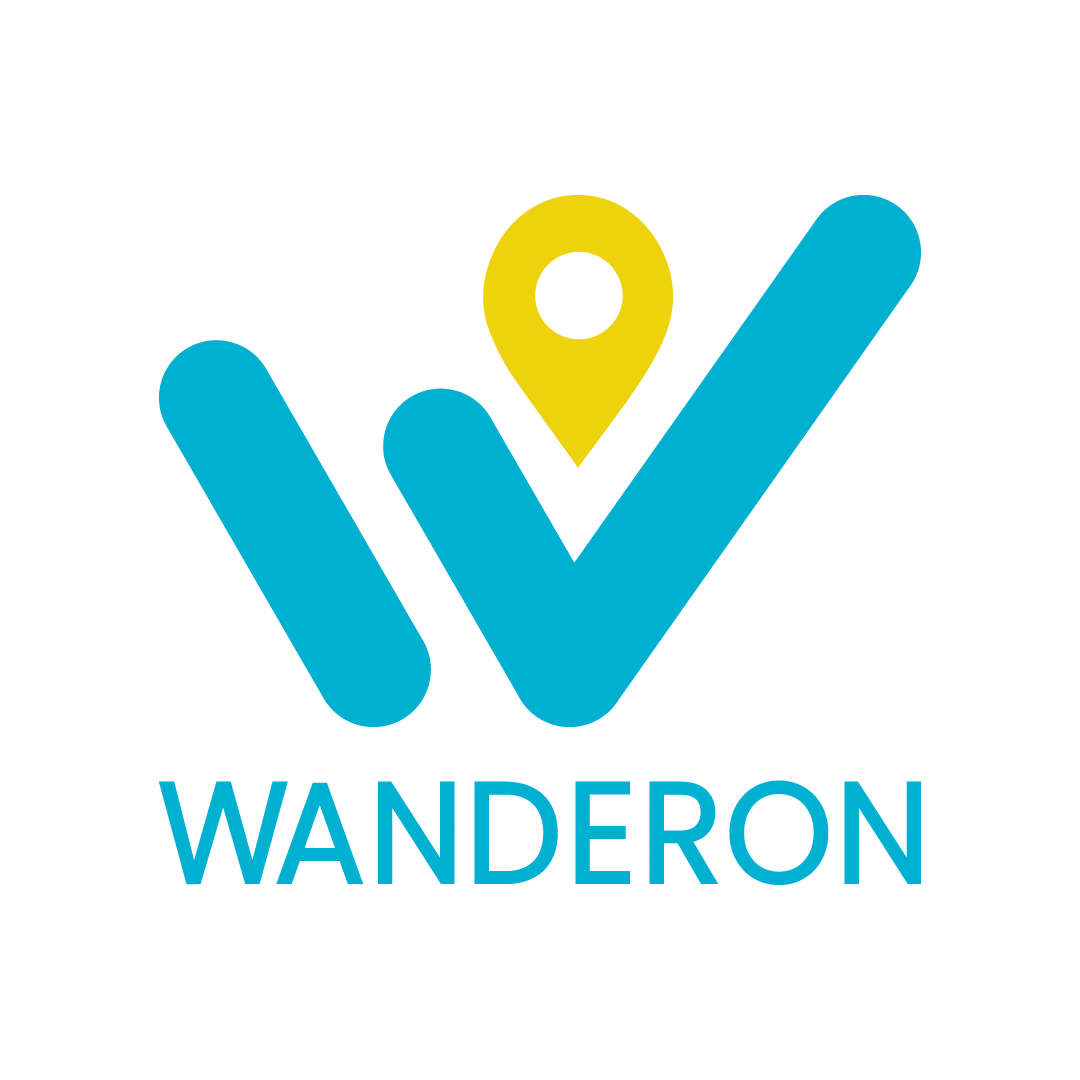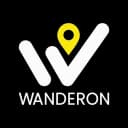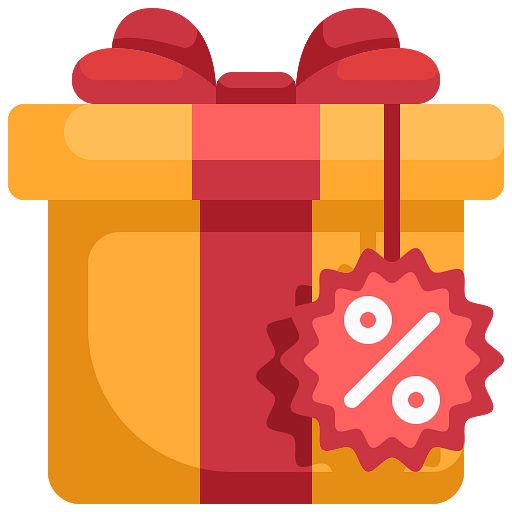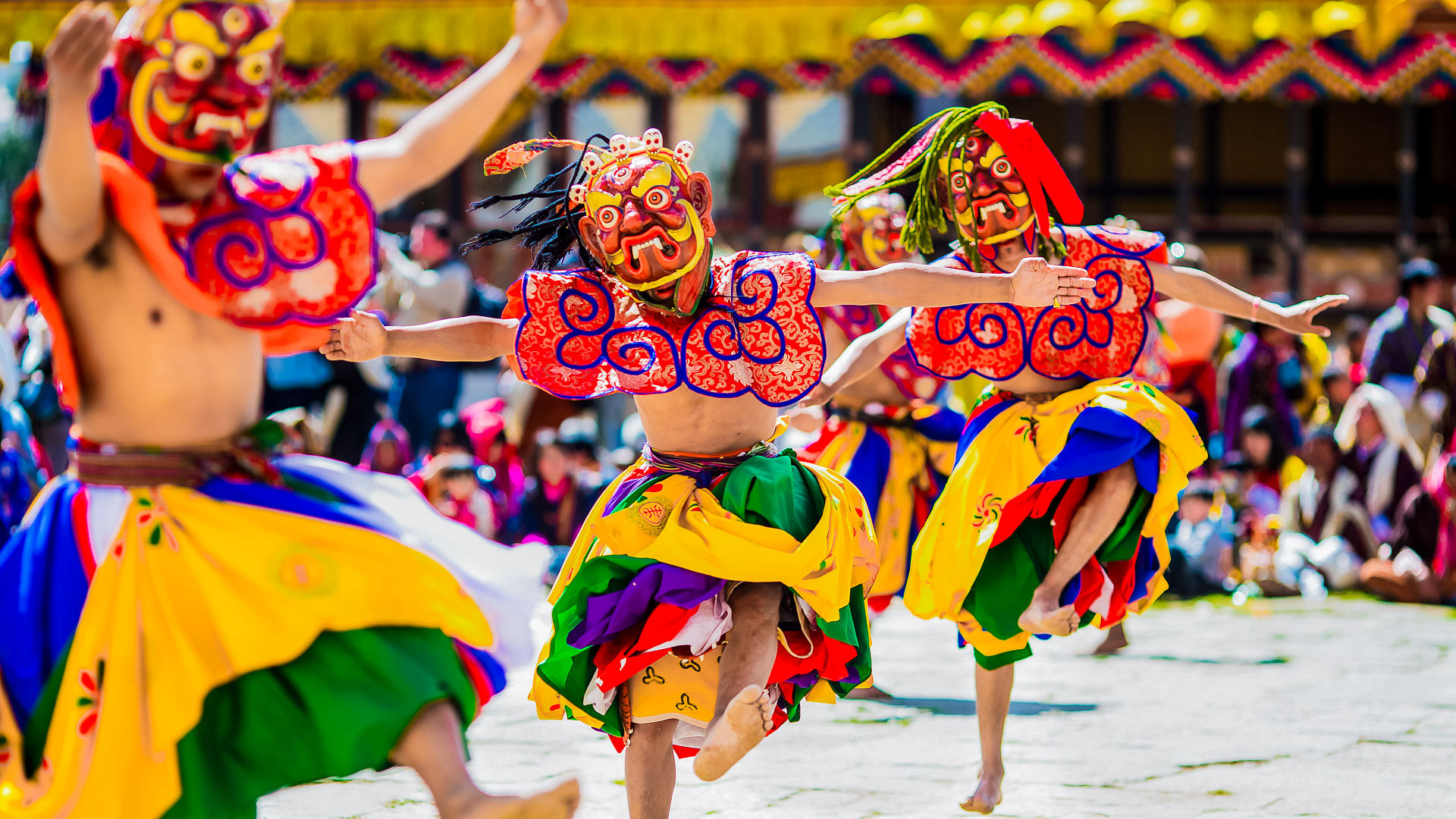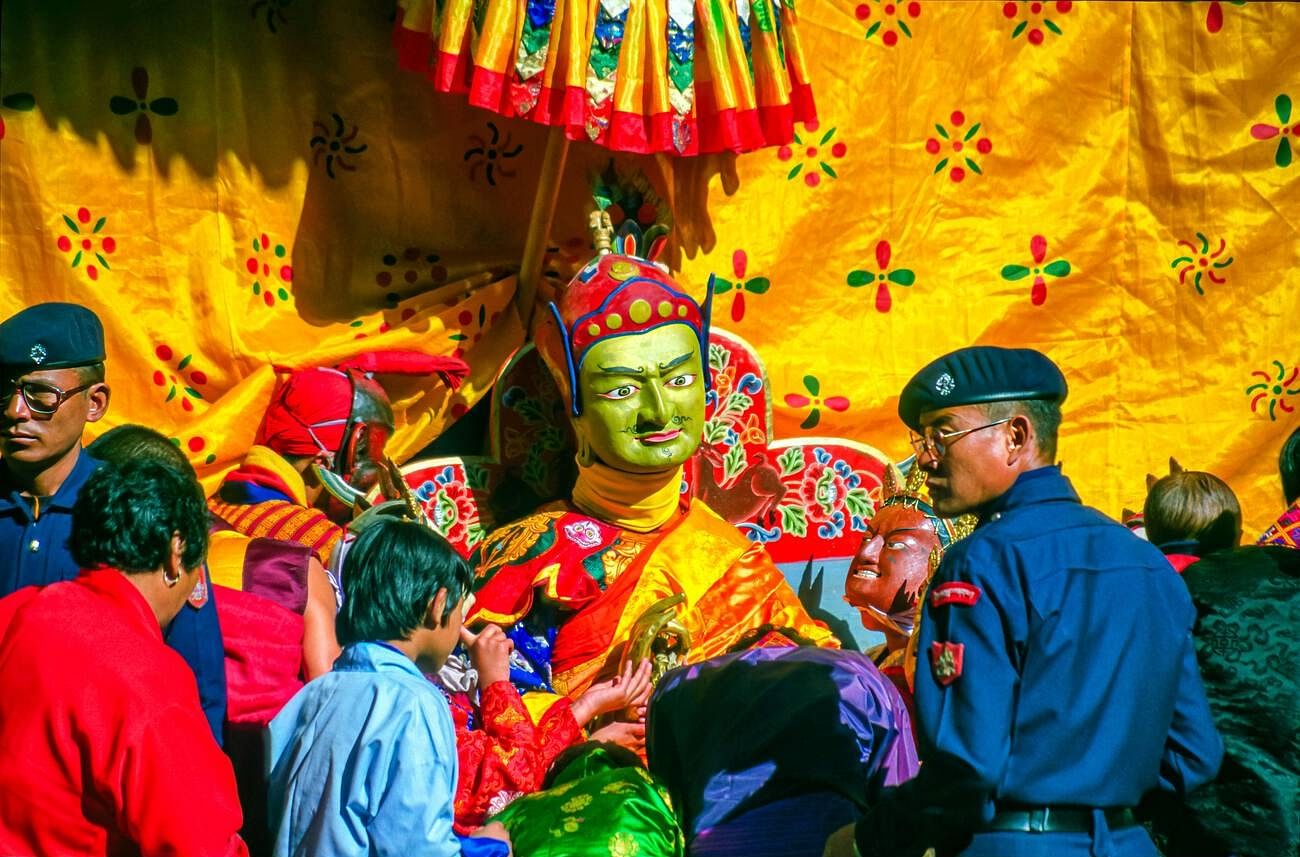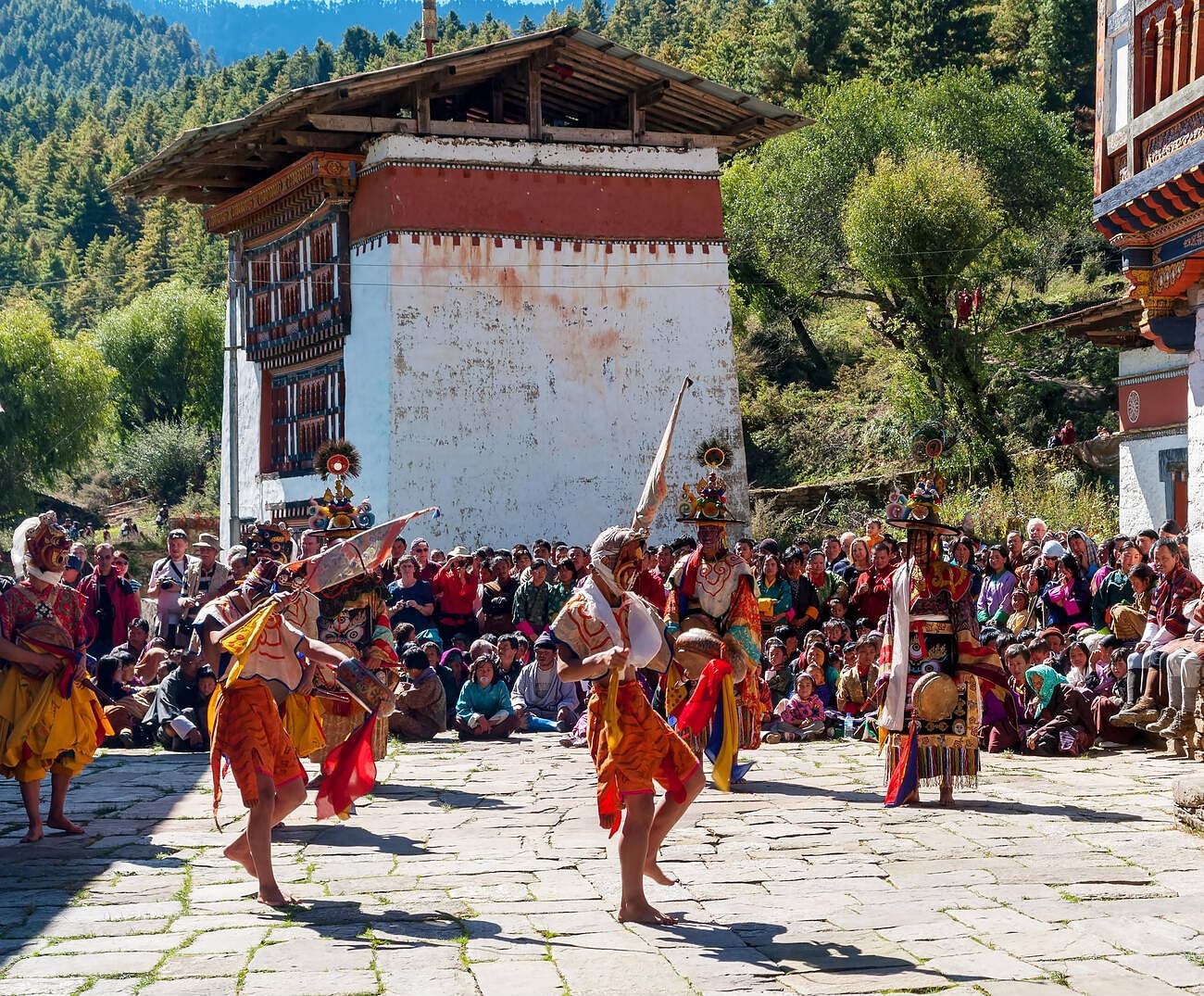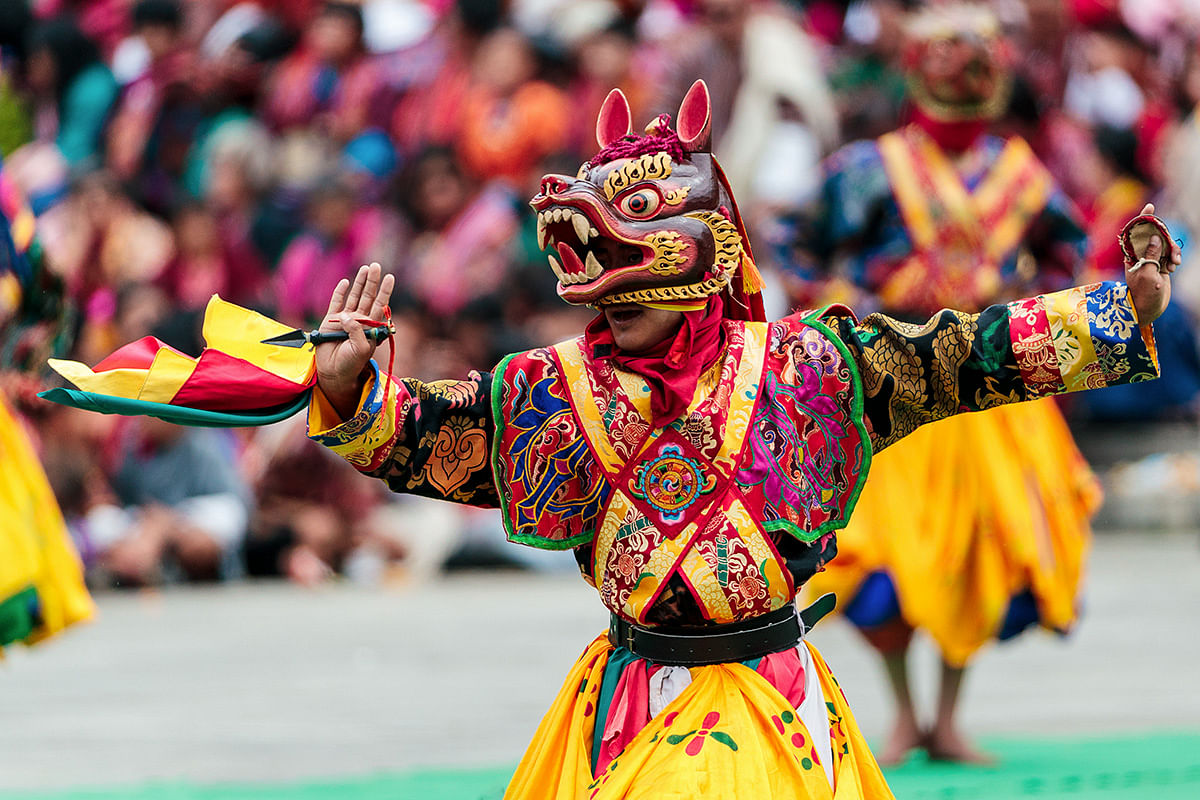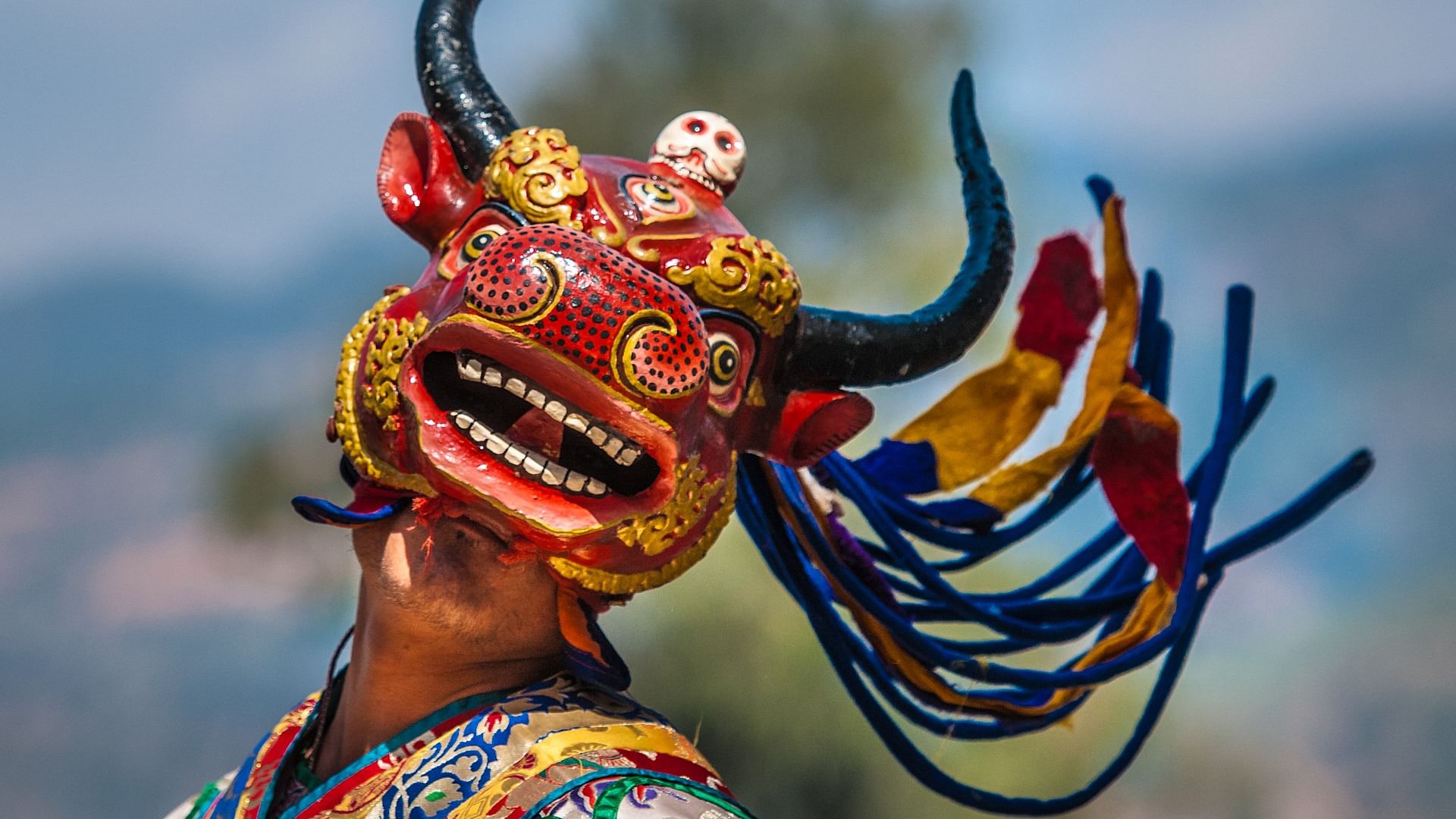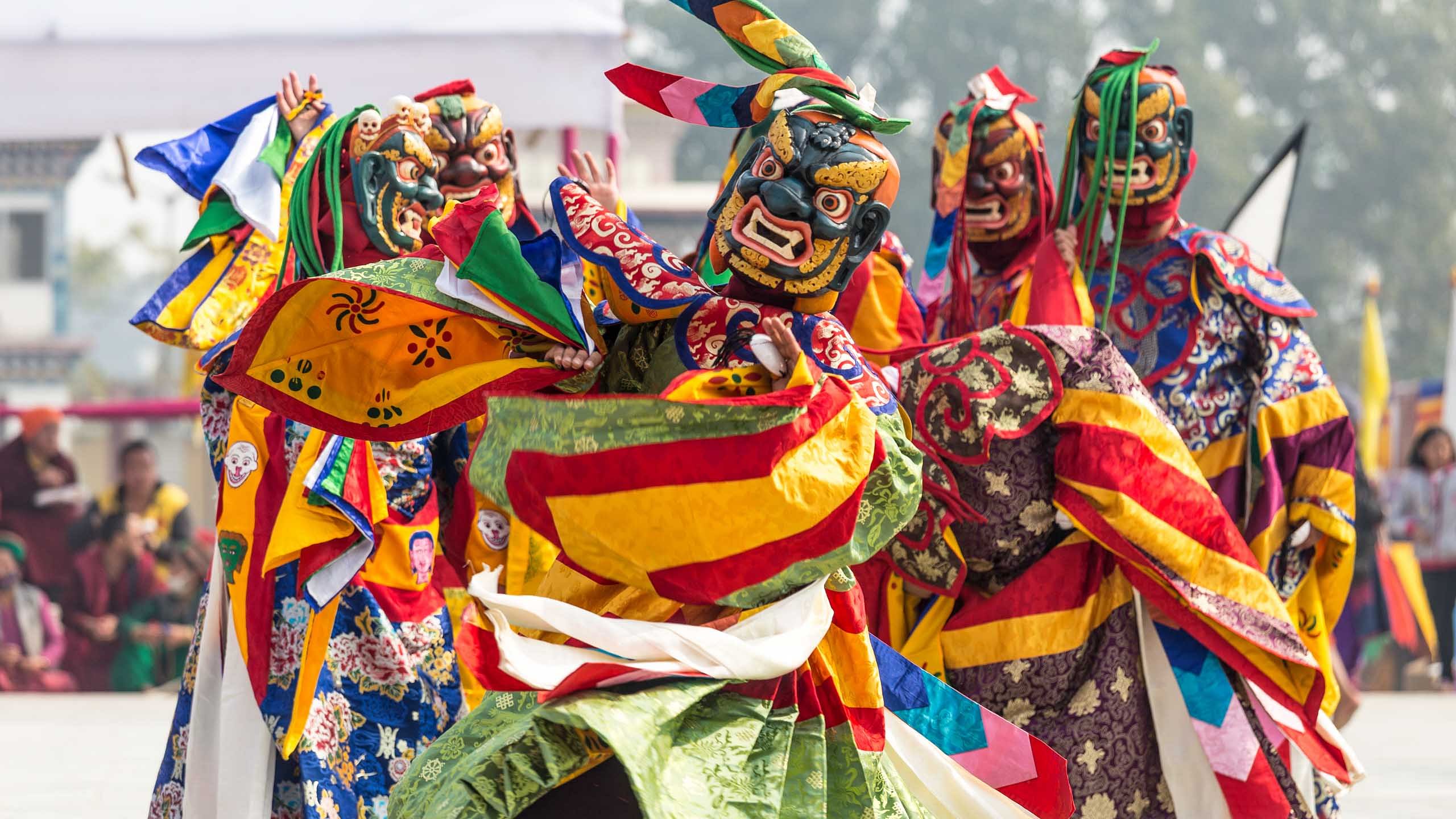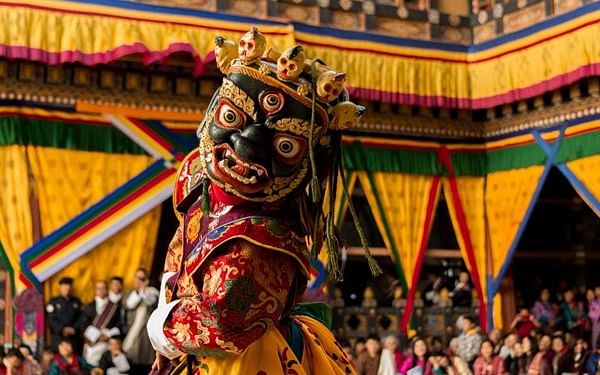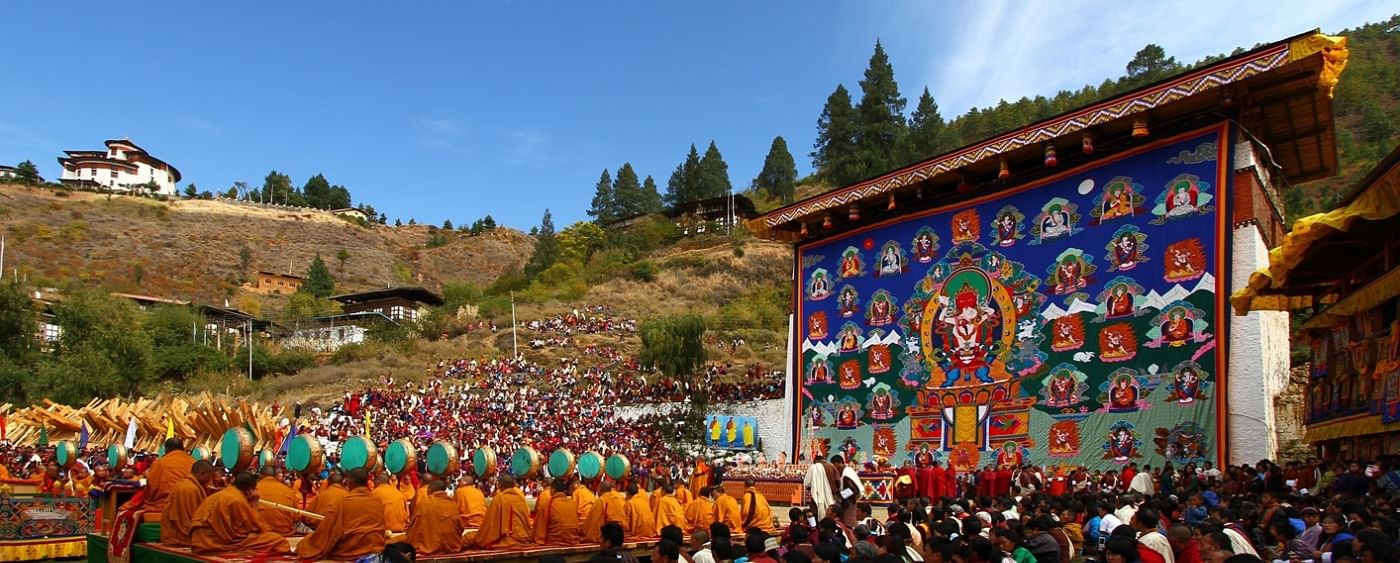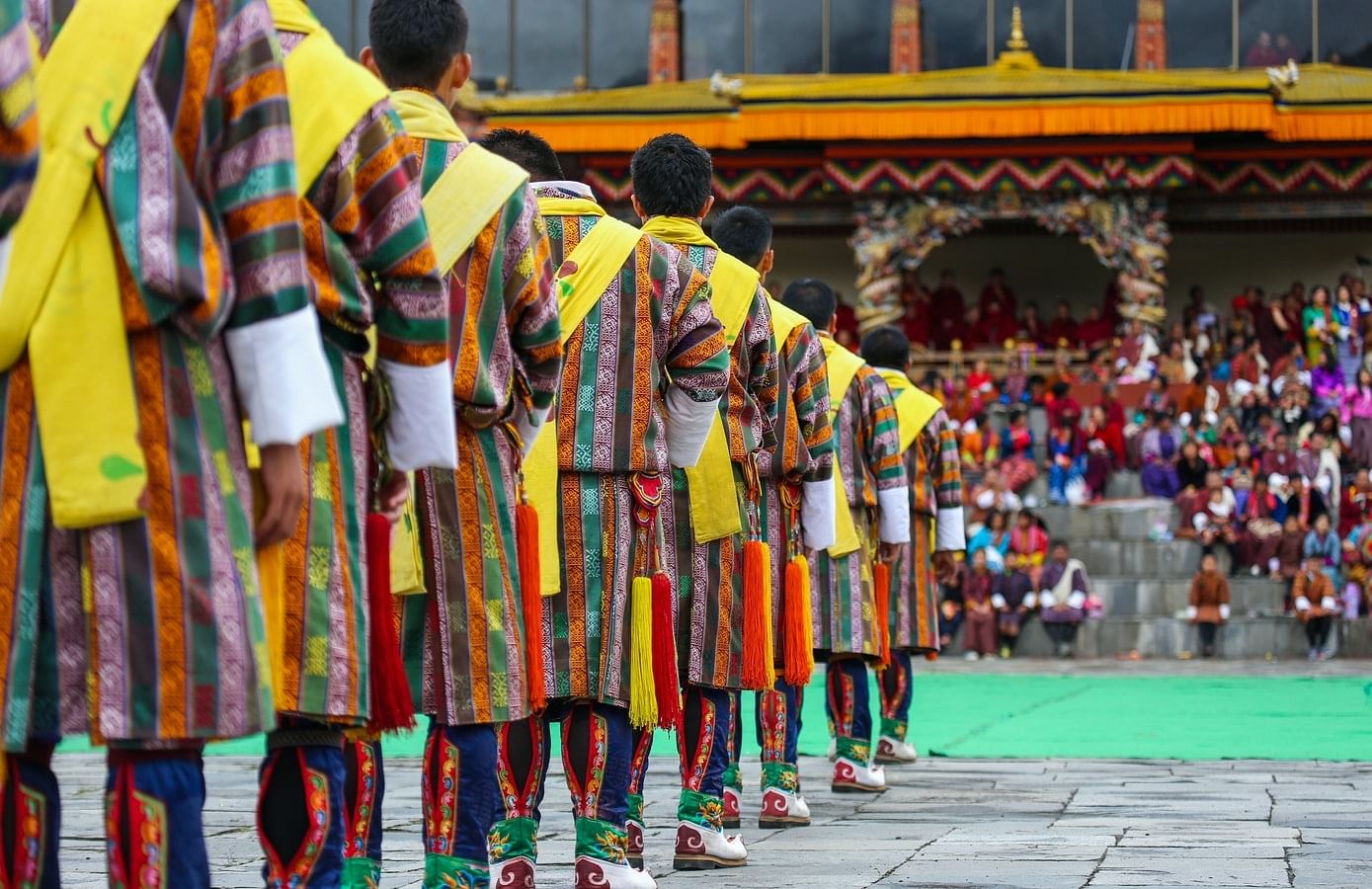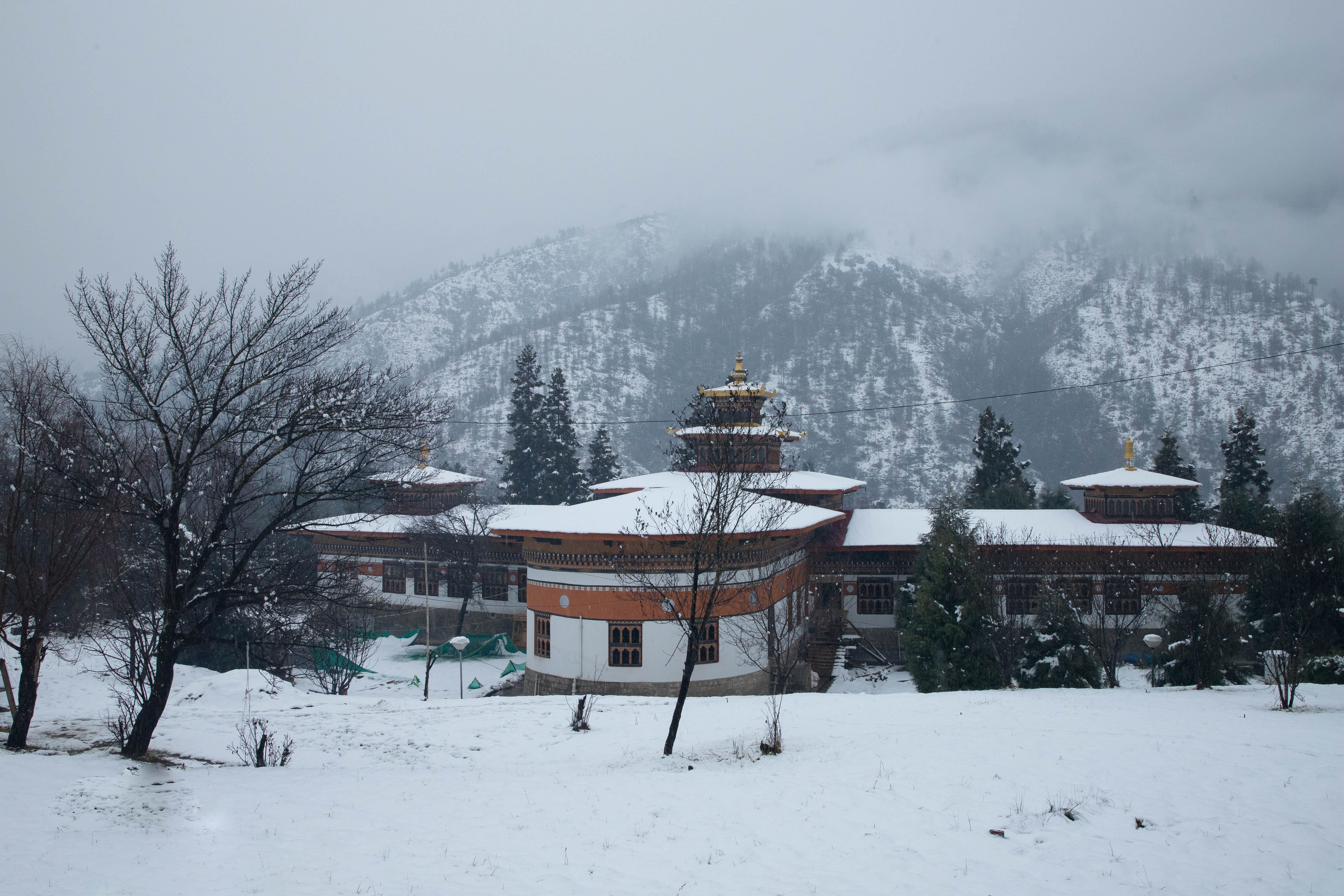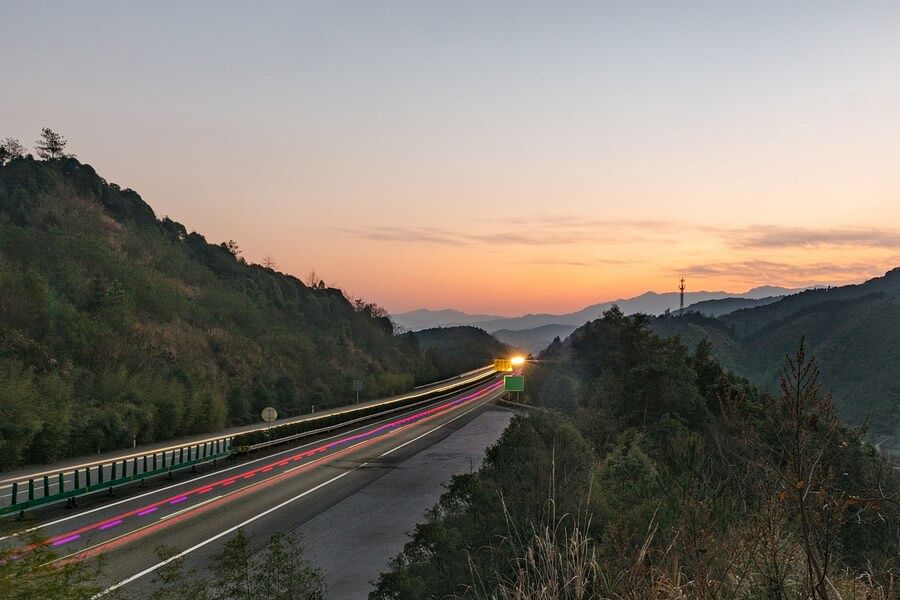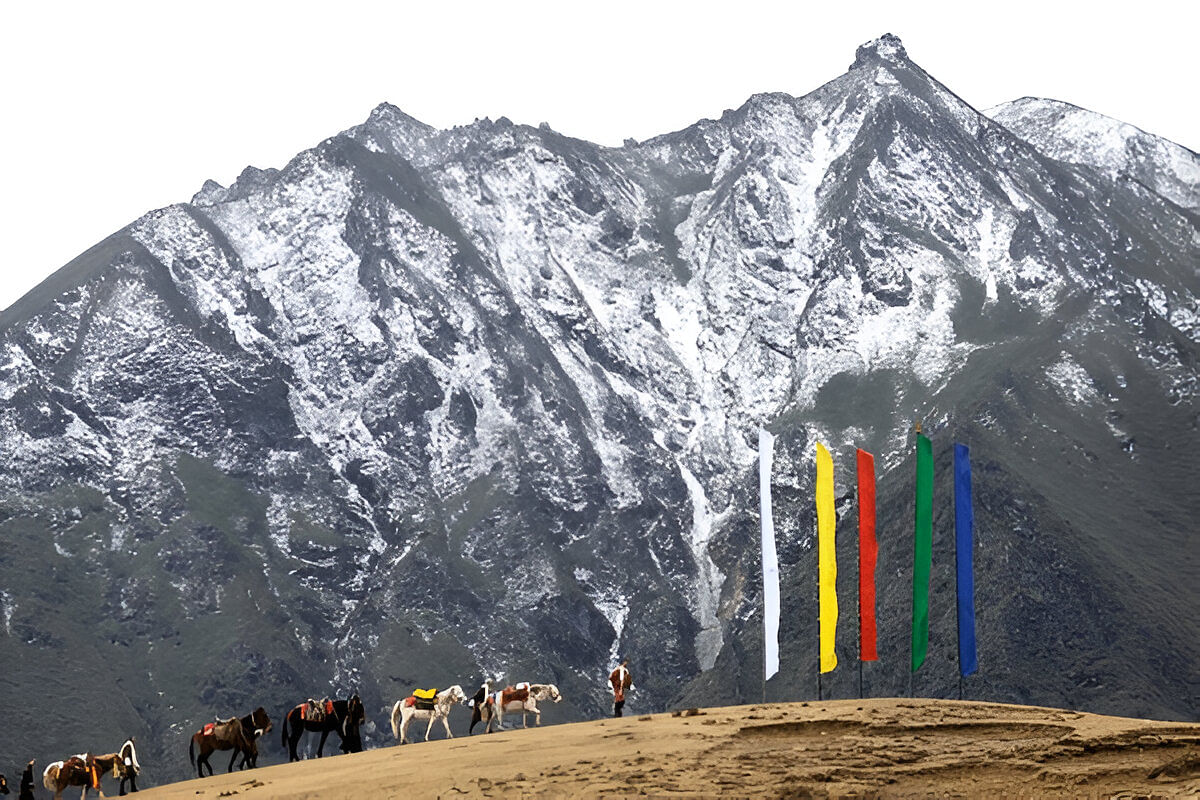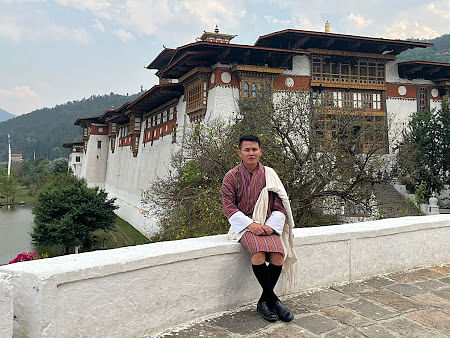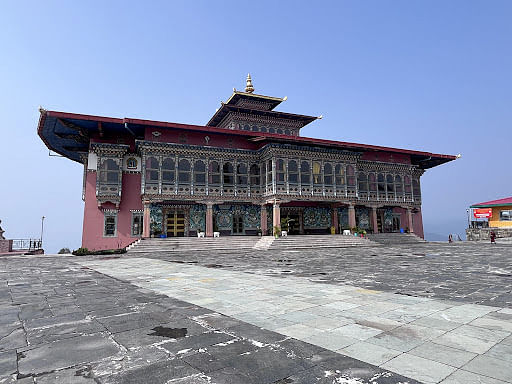The Paro Tshechu festival is hands down the wildest thing we've ever witnessed. Imagine monks in crazy, colourful masks doing these ancient dances that go on for hours - it's mesmerising and totally nuts at the same time.
Each spring, this little valley is filled to the brim with families who've driven for days just to visit here. The Paro Tshechu festival makes the entire area have a party atmosphere. Little children are running everywhere while their grandmothers chat and indicate which dancer got it wrong.
People really think watching these dances wipes away bad luck for the year. Sounds crazy, but when you're there watching everyone's faces light up, you kind of get it.
If you're figuring out things to do in Bhutan, this festival beats any temple visit by miles. Our Bhutan Tour Packages actually time everything around Paro Tshechu because missing it would be criminal. It's pure chaos in the best possible way.
You may wonder, what is paro tshechu, and why is it so important to the Bhutanese people? The word “Tshechu” means “tenth day,” which refers to the 10th day of a lunar month in the Bhutanese calendar. Tshechus are religious festivals dedicated to Guru Padmasambhava, also known as Guru Rinpoche, who introduced Buddhism to Bhutan in the 8th century.
The Paro Tshechu takes place in the spring, usually in March or April, at the Paro Dzong courtyard. For locals, what is paro tshechu goes beyond just a festival. It is a sacred event where people come to receive blessings, wash away bad karma, and pray for good fortune. For travellers, it is a unique chance to see Bhutanese culture, dance, art, and spirituality all come alive in one place.
- When it happens: Annually, usually in March or April (dates vary according to the Bhutanese lunar calendar).
- Duration: The festival lasts for 3 - 5 days, with main events on the central days.
- Best time to visit: Spring (March - April) offers pleasant weather and clear skies, perfect for enjoying dances and outdoor events.
The history of tshechus goes back to the 8th century when Guru Padmasambhava, also known as Guru Rinpoche, introduced Buddhism to Bhutan. He performed mystical dances to subdue evil spirits and taught practices that became the foundation of Tshechus.
Over the centuries, kings and lamas encouraged these festivals as a way to strengthen the spiritual life of people. The history of tshechus shows that they were never just about religion-they also became important social events. Villagers travelled long distances to attend, exchange goods, share stories, and celebrate together.
Today, Tshechus are celebrated in many districts of Bhutan, but the Paro Tshechu remains one of the grandest and most attended.
What Happens at the Paro Tshechu?
So, what happens at the paro tshechu? The festival in Bhutan lasts for several days and is packed with rituals, dances, and ceremonies. The main highlights include:
1. Sacred Masked Dances (Cham Dances)
At the heart of the festival are the Cham dances, where monks and laypeople don elaborate masks and costumes to enact stories from Buddhist mythology. These performances are believed to invoke deities and drive away evil spirits, purifying both the performers and the audience.
Notable dances include:
- Dance of the Four Stags (Sha Tsam): A lively dance symbolising the harmony between nature and spirituality.
- Dance of the Black Hats (Shana): Performed by monks wearing black hats, this dance is a significant ritual in the festival.
- Dance of the Lords of the Cremation Grounds (Durdag): A powerful dance depicting the triumph of good over evil.
2. Unveiling of the Giant Thangka (Thongdrel)
One of the most anticipated events is the unveiling of the Thongdrel, a massive religious scroll painting that depicts Guru Rinpoche and other revered figures. This thangka, measuring approximately 30m×45m, is displayed at dawn on the final day of the festival. Devotees believe that viewing the Thongdrel purifies sins and brings blessings.
3. Traditional Bhutanese Attire
During the festival, locals wear their finest traditional garments, such as the gho for men and kira for women. The vibrant colours and intricate designs of these outfits add to the visual splendour of the event, showcasing Bhutan's rich cultural heritage
4. Spiritual Rituals and Offerings
Monks perform various rituals, including prayers and blessings, to purify the environment and seek protection for the community. Devotees also make offerings of butter lamps, incense, and traditional foods to seek blessings and express gratitude.
5. Community Gatherings and Socialising
The festival serves as a significant social event, where people from different regions come together to celebrate, share meals, and reconnect with family and friends. The communal atmosphere fosters a sense of unity and strengthens community bonds.
Significance of Paro Tshechu
The significance of paro tshechu lies in both spiritual and social aspects.
Spiritually:
- It honours Guru Rinpoche and his role in spreading Buddhism
- Attending this festival is believed to cleanse sins and bring protection
- Watching the Thongdrel is considered a once-in-a-lifetime blessing
Socially:
- It strengthens community bonds, bringing together people from across Bhutan
- It offers a platform for families to meet and celebrate together
- It helps preserve Bhutan’s centuries-old cultural identity
For locals, the significance of paro tshechu goes far beyond entertainment-it is about faith, blessings, and unity.
Why You Should Experience It
For travellers, the paro tshechu is not just about watching performances; it’s about experiencing Bhutanese life at its purest. Imagine standing in the courtyard of Paro Dzong, surrounded by locals in colourful clothes, hearing the sound of drums and trumpets, and watching monks dance in sacred masks that have been used for generations.
It is also a chance to witness traditions that have remained unchanged for centuries. While the world outside has modernised rapidly, Bhutan continues to hold on to its spiritual roots, and festivals like this are proof of that.
Tips for Visiting the Paro Tshechu Festival
- Plan Early: The Paro Tshechu festival attracts many visitors, so hotels in Paro get booked quickly. It’s best to book your stay in advance.
- Dress Modestly: Since it is a religious event, wearing respectful clothing is important.
- Join the Locals: Don’t just watch from a distance; interact with locals, ask questions, and learn more about their culture.
- Photography: While photos are allowed, always be mindful of not disturbing the rituals.
- Stay for the Thongdrel: The unveiling of the giant scroll is a once-in-a-lifetime experience that should not be missed.
The Paro Tshechu festival is not just an event; it is the heartbeat of Bhutanese culture. With its sacred mask dances, spiritual rituals, and vibrant gatherings, it reflects the soul of Bhutan.
For the Bhutanese, the paro tshechu is a time of prayer, blessing, and community. For travellers, it is a once-in-a-lifetime chance to see Bhutan at its most authentic and colourful.
If you ever plan a journey to Bhutan, make sure it coincides with the Paro Tshechu festival. You’ll leave not only with beautiful photos but also with memories of faith, joy, and togetherness that last a lifetime.
